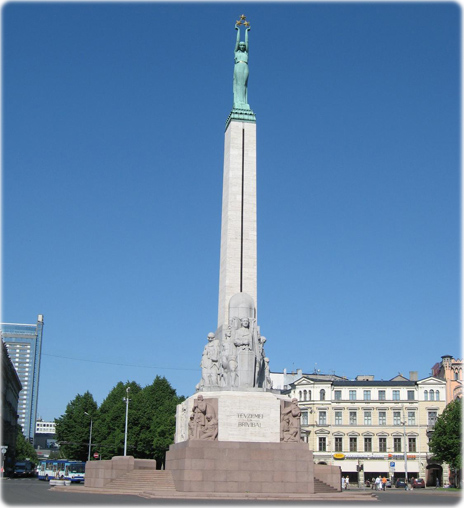
Latvia
The first inhabitants of what is now Latvia entered the region from the southeast as early as 5000 BC. The Roman historian Tacitus included the region’s inhabitants in lists of peoples known to be living beyond the northeastern borders of the Roman Empire, but he offered no specific information about them. Only in the 9th and 10th centuries, when Viking raiders began to cross the Baltic Sea regularly, does any specific information emerge. In that period the region’s peoples consisted of the Kurs in the western coastal region, the Livs, around the Gulf of Rīga, the Zemgals in the south; the Latgals in the east; and the Selonians in the southeast. These peoples lived in loosely organized tribal societies with distinct traditions and mythologies. They often fought with one another and at times with the neighboring Estonians, Lithuanians, and Russians.
The present Republic of Latvia is a legal successor to the independent republic of the same name that existed from 1918 to 1940. The 1922 constitution, which was fully restored in 1993, is recognized as the country’s supreme legal document.
Latvia lies within the great East European Plain. The land gently rises in elevation from west to east. The eastern uplands constitute the largest expanse of land in the Baltics with an elevation of more than 200 m. Latvia’s highest point, Gaizina Kalns, reaches a height of 312 m in the east central part of the country.
Latvia is a land of numerous rivers, lakes, and wetlands. About 4% of the country’s area is inland water. The country has more than 12,000 rivers and streams, although only 17 are longer than 100 km. The Daugava is Latvia’s largest river in terms of water volume, as well as one of the principal rivers of the Baltic drainage area. It originates in Russia and passes through Belarus before entering Latvia, where it follows a northwesterly course for 352 km and drains into the Gulf of Rīga. Several dams on the river generate hydroelectricity.
Latvia’s climate is tempered by marine air masses. Near the Baltic Sea winters are mild and summers are relatively cool. The eastern part of the country experiences slightly colder winters and warmer summers. Latvia has high levels of humidity and frequently cloudy skies.
Evangelical Lutheranism is the traditional religion of most Latvians, with the exception of those in eastern Latvia, who are predominantly Roman Catholic.
The Riga Freedom Statue is in a plaza in the center of Riga near the old town. It honors the soldiers killed in the Latvian War for Independence (1918-20). The monument, built in the early 1930's and unveiled in 1935, is 42 m high and is constructed of granite, travertine, and copper. At the top of the column is a copper figure of Liberty; the sculptures and bas-reliefs at the base depict Latvian culture and history. A Guard of Honor is present at all times.


|
Copyright © Geographic Guide - Maps World, European Continent. |

(Source: U.S. Central Intelligence Agency)